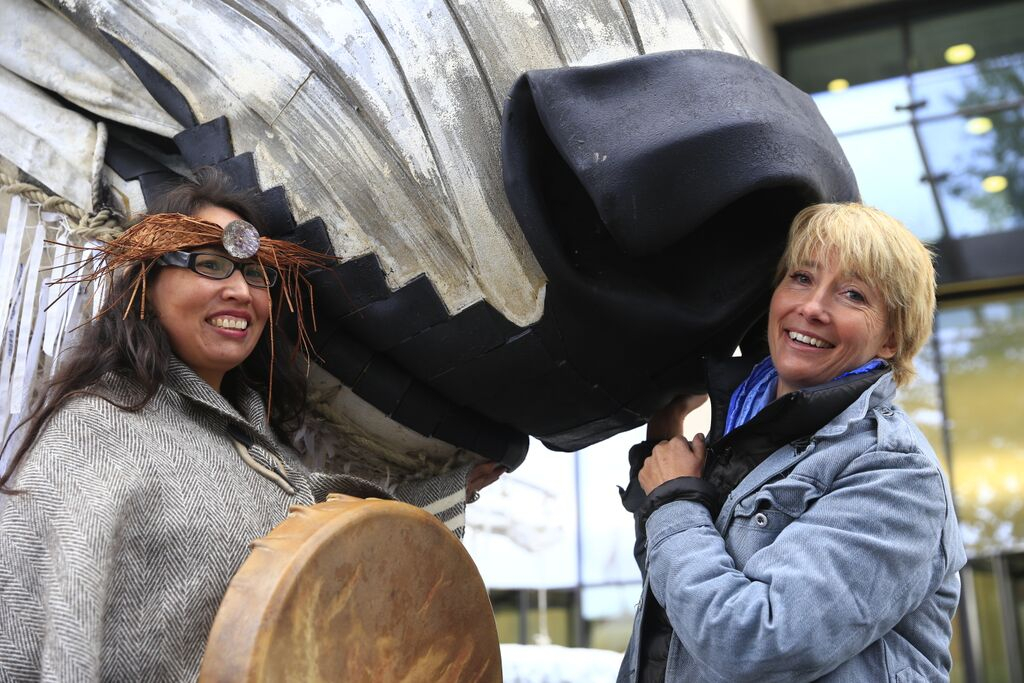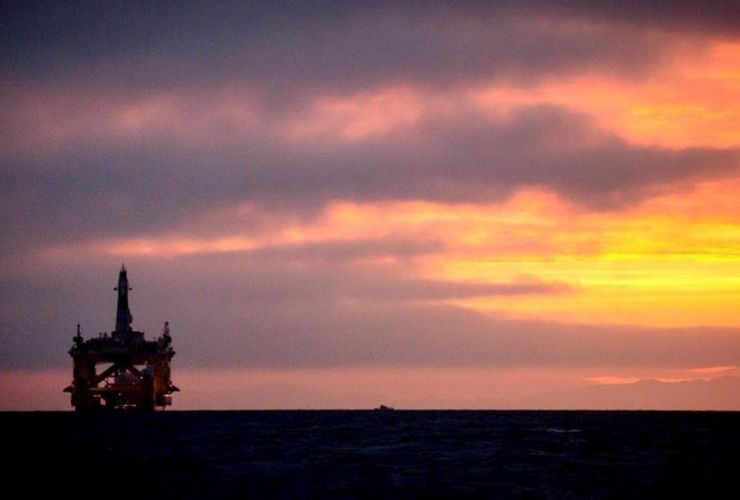Actress Emma Thompson and Musqueam First Nation artist and Canadian activist, Audrey Siegl helped place a colossal polar bear puppet the size of a double-decker bus into place just metres away from Shell’s front entrance.
The giant bear is meant to stop Shell from drilling in the Arctic. Six protesters are inside the three-tonne polar bear, locked to it so that it can’t be removed. The bear is named Aurora after the northern lights that flicker above the Arctic. The bear will roar through the energy company’s front door at intervals during its stay – demanding that Shell remove its drilling rigs from the north.
Siegl and Thompson were on the front-lines of a Greenpeace-led protest which has built into a global movement to save the Arctic from oil extraction.
“I’ve been to the Arctic,” Thompson said. “I’ve seen the beauty. I’ve seen the wildlife and my heart breaks to think that Shell is up there right now, drilling for the oil that threatens not only their habitat, but ours.”

Thompson was at the protest, reading a poem that she composed especially for the event, while Siegl performed a traditional song with the same drum that she used to confront Shell’s Arctic-bound rig at sea in June.
“I am here to remind you, the people, that we have an immense amount of power,” Siegl said. “When we unite, we are unstoppable. I am here to remind Shell that all life is sacred.”
Shell has faced protests and criticism ever since the Barack Obama administration gave the oil company final permission to begin drilling in the Arctic seabed. The company has until September 28 to strike oil, at which time it will close up its operation for the winter.
Shell proposes to drill up to six wells within the Burger Prospect, located about 70 miles northwest of the village of Wainwright, Alaska. The wells would be drilled in about 140 feet of water by the vessels, the Polar Pioneer and the Noble Discoverer.
Extreme conditions in the Arctic, including massive floating icebergs and stormy seas, make offshore drilling risky and increase the possibility of a disastrous oil spill.
“Arctic drilling is a threat to the Arctic and a threat to millions of people living on the frontline of climate change; yet Shell is ignoring all this in blind pursuit of profit,” Greenpeace UK Arctic campaigner Elena Polisano said in a statement.

Shell’s Arctic drilling program has faced a number of protests this year. The company’s rig, the Polar Pioneer experienced activists boarding it in the middle of the Pacific Ocean; ran up against a several thousand strong Kayaktivist protest movement in Seattle; and encountered an Indigenous activist protest at sea as it sailed through Canadian waters.
The company’s icebreaker was delayed in Oregon by a 40-hour hanging blockade from the St. John’s Bridge in Portland.
.A Shell spokesperson told Britain’s The Independent, that the company respects the right of people to protest as they try to meet the world’s energy needs.
But the paper reported that Shell said that it was “disappointing that Greenpeace continually choose to focus on mounting publicity stunts rather than engage constructively in the debate about how to meet the world’s growing demand for energy while reducing CO2 emissions.”
Climate change is melting Arctic sea ice at a rapid rate, and this March the region experienced the lowest sea ice maximum ever recorded. The receding ice makes it easier for oil companies to push their drilling rigs ever further north.
Writing in the science journal, Nature, researchers have concluded that Arctic drilling is incompatible with limiting global warming to two degrees above pre-industrial levels, a target agreed upon by most governments.




Comments